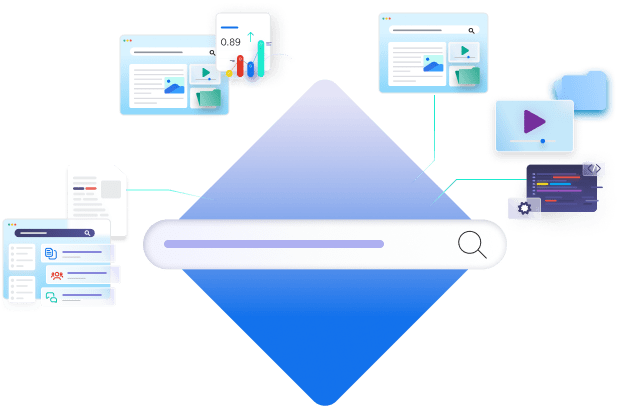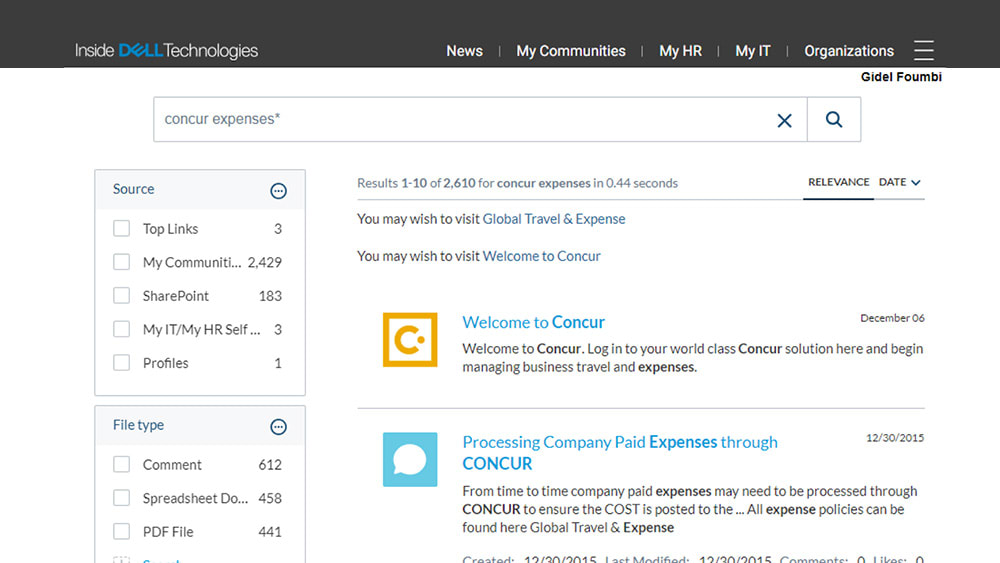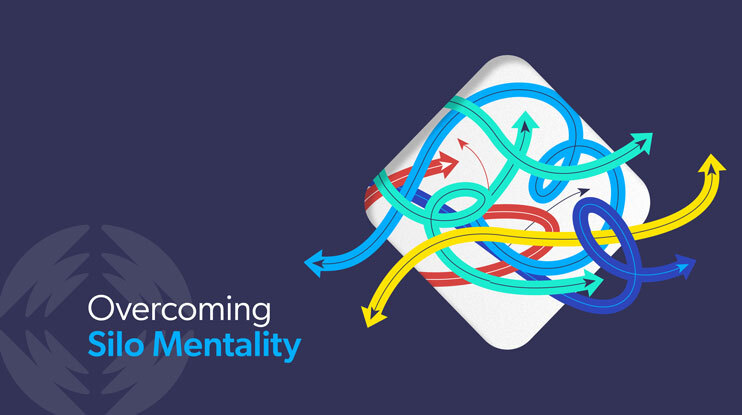If you haven’t heard of silo mentality, you’ve likely experienced it.
Think about the last time you were looking for information at work, either to answer a question or develop a project. Parsing the oceanic amount of information available on a company intranet is one thing. (And it’s exponentially worse when you add the world wide web to the equation). It’s another thing entirely when the information you need exists in someone else’s head.
Silo mentality is a widespread phenomenon. Eighty percent of respondents to a year-long study of over 100 global businesses said “strongly pronounced” team silos negatively impact their company’s costs, innovation potential, culture, and profitability. Only 54% had made breaking silos a top priority, and only 20% report having the right measures in place.
How do you identify silo mentality in your business, and how can you mitigate it? Surprising as it may be, that same intranet we mentioned above is the place to start.
What Is Silo Mentality?
Silo mentality, also known as organizational silos, is when multiple teams, departments, or other groups within an organization don’t share information. These workplace silos happen organically as a result of implementing structure throughout a company’s lifetime.
As companies form different teams to handle functions throughout an organization, cross-departmental communication slows down and natural barriers take shape. While this is somewhat inevitable, departmental goals end up being prioritized over the organization’s common goal and cross-functional collaboration benefits are deterred.
It’s not surprising that departmental silos exist even in our seemingly hyper-connected world. The mass adoption of flexible work and asynchronous communication, coupled with an ever-expanding toolset to help improve their productivity, constantly changes how work happens. Helping to synthesize information into actionable knowledge is a major use case for generative AI models like ChatGPT.
Relevant reading: 3 Ways GenAI Transforms Employee Experience
Why Silo Mentality Happens
It’s true that organizational silos can inhibit collaboration and even lead to employee turf wars. But they also exist to aggregate expertise, assign accountability, and provide a sense of identity.
Olivier Serrat, a researcher in the field of organizational leadership and author of Knowledge Solutions: Tools, Methods, and Approaches to Drive Organizational Performance, states that siloed teams are often the result of “earnest attempts to identify the right business issues, pinpoint the right underlying obstacles, adopt the right design characteristics, and implement change the right way.”
He describes silos as growing out of something left undone — “provision of compelling motives, means, and opportunities for personnel to come together.” Companies that wish to preserve the good intentions of silos while minimizing negative effects have to think carefully about bridging gaps between teams.
For example, in this year’s Coveo’s EX Industry Report, one glaring gap that we found is not having the right information to do their jobs led to increasing employee burnout. More than a third of employees felt frustration from this lack of information, and 30% lost confidence over it.
One helpful solution is to embrace an effective, if likely, under-utilized tool: effective intranet search.
Intranet Search: Breaking Silo Mentality to Build Effective Communication
Unfortunately, there is a tremendous amount of content on intranets today, particularly “unstructured content.” As such, many have become a content graveyard for employees rather than the vibrant and knowledge-sharing community they can be. Intranets are most impactful when they are connected to content repositories that employees use regularly. Exposing that content can be done effectively with robust search.
Now you can use your intranet to bridge information gaps in training, employee onboarding, or even customer support. It’s possible to even provide information the searcher didn’t know existed, such as when a related document pops up for a particular query.
Upgrading From Traditional Search
Traditional, keyword-based search is not powerful enough to help employees sift through content to find the relevant insights they need. When your intranet’s search is powered by a unified index that leverages artificial intelligence (AI), information delivery is tailored by role and access permissions.

Enabling this level of centralized knowledge sharing encourages cross-team collaboration. When sales can surface product development documentation, they may be more likely to address customer concerns at the point of sale. The same goes for customer agents who now have access to the marketing materials; they can see the actual promotion that enticed a new customer before trying to address a billing concern.
Most importantly, it empowers employees to access critical information when they need it most. Instead of running customer complaints “up the ladder” or relying on a manager to return an email, they can respond to issues before they become big problems. Unified search can be a vital aid in case resolution, significantly impacting your case escalation management results. In so doing, the organization also provides a greater likelihood of customer success via enhanced customer service.
6 Tips for Overcoming Silo Thinking with Unified Search
Unified search is a powerful collaboration tool for breaking barriers between different departments by combating information silos, when wielded effectively. The following are best practices to create an experience that empowers employees to do their best work, and row together toward collective company goals.
1. Involve your employees in the design process
Your employees are the ones using your intranet, and they ultimately determine its success or failure. So it makes sense to involve them early in the planning process to make sure you’re delivering the right improvements to increase engagement.
Designing a modern intranet requires an understanding of how your employees work, what their information requirements are, and how they interact with the various applications used within your enterprise.
Relevant reading: 6 Intranet Best Practices for a More Engaged Workplace
2. Implement intelligent search algorithms
Because AI understands employees’ intent and needs when searching for information, AI-powered search on the intranet presents relevant information in context and in the flow of work to your employees. The result? They can do more on their own with less effort.
The technology connects the ecosystem of record, makes information findable & searchable from wherever it is located, and then continually learns and improves to ensure that the best information is available to every person, every time. This enables every employee to share and consume knowledge, depending on their context, information needs, and access level.
Relevant Reading: User Intent: How AI Search Delivers What Users Want
3. Use natural language processing (NLP) for better results
When searching, most users aren’t using sophisticated language – or even the language of the colleague in the same position sitting next to them. Thankfully, sophisticated search using NLP doesn’t need them to.
They can type in fragments of words, casual uses of language, or synonyms for things, and the search tool understands what they intended. It can even fill in the gaps when they can’t come up with the proper word and suggests it for them.
Relevant Reading:7 UX Design Best Practices for Autocomplete Suggestions
4. Integrate AI-driven search assistants
Bing, Bard, and ChatGPT are changing expectations of search. So, why is navigating tech at work so cumbersome? Companies have an opportunity to build some of the same digital assistant culture into the workplace through AI-powered helpers.
These technologies, whether used in the search tool itself or on the results page, can help employees call up answers to their questions in the same way they would in their kitchen or car. Just remember, the concept of user-friendly still applies.
Relevant Reading: Is Your Organization Ready for Generative AI?
5. Encourage user-generated metadata and knowledge sharing
There may be nothing more inefficient than having someone who knows little about day-to-day operations create the taxonomy for your workforce documentation. (And yet, that’s exactly what’s happening at companies today.)
Why not have the people who use the documentation tag it in real time? They are the best judges of what’s useful and how these knowledge assets can be best utilized. With the incentive to make their knowledge base more representative of their actual pain points, they may be willing to put in that small amount of additional work and sort documents in a way that makes sense to them.
Relevant Reading: 7 Tips to Ready Your Knowledge Base for Hybrid Work
6. Use analytics to improve the employee experience
Although machine learning optimizes your intranet search engine automatically over time, some ongoing analysis is still required if you want to deliver the best company intranet experience for engaged employees.
That’s because some of the content your employees are searching for might not actually exist yet anywhere in your organization.
By leveraging intranet search analytics, you quickly can identify where your employees are getting stuck in their search for information. Content owners then can work to plug these gaps and increase the likelihood of a successful search session.
Success Story: Dell Breaks Silos with Effective Intranet Search
Cross-collaboration and accessible data aren’t just a pie-in-the-sky promise. Companies are using Coveo’s improved intranet search capability to supercharge their internal processes.
Before using Coveo, Inside Dell was the company’s lowest scoring enterprise application for employee satisfaction with an average ESAT score of 23%. As with many organizations, the intranet was an under-invested technology, caught in a multi-year upgrade cycle that was more aligned with maintenance contracts than user needs.

Post launch, ESAT scores climbed from 23% to over 60%, recording the most significant quarterly jump ever by an IT application at Dell and taking home the prize of most improved application each quarter in its first year of operation.
This partnership is still evolving, as Dell knows that unified intranet search is an ongoing project. After seeing quantifiable impacts on productivity and collaboration, the company is ready to move into the future with a holistic view of its customers and internal stakeholders.
Relevant Reading: Building a More Connected Way to Work at Dell Technologies
Adopt Enhanced Intranet Search for Effective Collaboration
While the user may still think of search as typing in a box, the technology running behind the scenes will keep getting smarter and more adaptable. Advancements in AI and machine learning will give employees access to information that was previously siloed and hard to reach. Additionally, they will see more usable and personalized results for their individual use cases.
Look for improved integration with the communication and collaboration tools already in use by today’s in-office and remote workforces, too. From SharePoint to Salesforce, the integrations employees know and love can get “smarter” with amplified search capabilities. Employees will continue engaging with the tech tools in their workflows but see improved results over time.
As you add more employees, rather than investing greater time into manual tuning, AI-powered search will automatically deliver the most relevant content to each employee. With an intranet infused with AI-powered search, you can expect more rapid cross-departmental collaboration to create faster new product development cycles, shorter time-to-market for new products, and more successful new product launches.
Dig Deeper
Employees expect more from their workplaces. Not just better pay, benefits, and a more flexible work schedule — even before the transition to a hybrid work model brought new challenges to workplace collaboration, workers were bombarded with information from multiple SaaS platforms daily.
In our free guide, learn how artificial intelligence can help you retain and develop top talent by providing empowered employee experiences.


